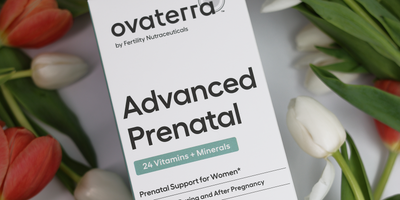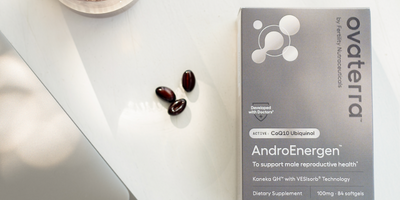In the United States and many other countries in the world, governments require that food manufacturers add folic acid to bread, pasta, cereals and other food items. This is because folic acid – or its reduced form, folate – is essential in the healthy development of the central nervous system in fetus, and deficiencies are very common. Folic acid fortification has improved our folate status significantly, but there are still a few things to pay attention to on the journey. Let’s dive in.
What is folic acid?
Folic acid is a synthetic form of folate, a B vitamin (Vitamin B9, to be precise). Used in fortified foods and nutritional supplements, folic acid is converted into folate once in the body. Folic acid is made through chemical synthesis, although a group has been able to produce it through biological engineering using a species of fungus.
In the US, the FDA requires folic acid fortification of breads, cereals, pasta, rice and other grain-based products since 1998, in order to ensure that people get enough folate through diet. As of 2017, over 80 countries require folic acid fortification of certain foods. In fact, folic acid is the most commonly mandated vitamin for food fortification in the world.
Why folic acid fortification necessary?
Folate is involved in many biological processes, but is particularly essential when DNA synthesis is in progress and cells divide rapidly, as in gametogenesis (production of sperm and eggs), pregnancy and infancy.
One of the most important roles of folate is to facilitate the normal development of the central nervous system of the fetus. Low levels of folate in pregnant women has been found to cause neural tube defects, a group of birth defects where the skull or the spine doesn’t close properly, leading to missing brain parts or a damaged spinal cord. Neural tube defects is one of the most common birth defects in the world, affecting up to 300,000 babies each year. Spina bifida and anencephaly are the most common types of neural tube defects.
While other causes, including genetics and Vitamin B12 status, also play a role, one of the ways to prevent neural tube defects is through sufficient intake of folate as a part of a healthy diet. In the US, for example, Institute of Medicine recommends 600 mcg/day for pregnant women, while some OBGYNs recommend up to 1,000 mcg/day. However, it can be difficult to get the full amount consistently from food alone. This is why many countries, including the US, mandate folic acid fortification in foods consumed by the majority of the population.
Why is folic acid used in fortified foods and supplements, instead of folate?
You might wonder why folic acid is used in food fortification and nutritional supplements, instead of folate, since folate is what the body uses. The main reason is stability: Folate that is found in natural, whole foods like beef liver and spinach, are susceptible to heat, especially in the presence of acid. (Folate is also a water-soluble vitamin, so boiling foods also leads to loss of some of this essential vitamin.) Natural folate also degrades when exposed to light. Folic acid, on the other hand, is much more stable against heat and light, making it a more suitable form to use in shelf-stable foods and supplements.
Does folic acid help everyone?
However, there is a dosnside: Folic acid is less efficient than folate. There are several forms of folate, with folic acid being one of them. Of these, the body needs the active form called 5-methyltetrahydrofolate (5-MTHF for short) to drive biological processes. All other forms of folate need to be converted into the 5-MTHF in the digestive system. Folic acid takes much longer to be converted into 5-MTHF, compared to the folate from natural food sources.
Furthermore, people with certain genetic variants of the MTHFR gene have an even harder time converting folic acid into 5-MTHF. This not only means that they aren’t getting as much folate benefit from fortified foods and supplements, but also that folic acid can accumulate in the bloodstream, which can lead to health problems.
With folic acid in foods and supplements, are we getting enough folate?
Are women getting enough folate from foods and supplements? The answer is a bit complicated: Things have improved since the introduction of folic acid fortification in 1998, but a surprisingly large number of us are still deficient.
Follow-up studies of the CDC’s National Health and Nutrition Examination Survey have shown that the folic acid fortification has been successful in improving the folate status of women in the US. Shortly after folic acid fortification was mandated in 1998, the average serum folate levels have doubled. Folate levels have been relatively stable since the early 2000s.
The prevalence of outright folate deficiency (defined as serum folate level below 7 nmol/L) has also decreased from 26% prior to 1998, to 19% in 2010-2016 in all US women. Compared to the global estimate of over 40% folate deficiency rate, 19% may seem respectable. However, it still means that nearly one in five of us do not have enough folate circulating in our bodies. Even women taking supplements with folic acid or folate, like prenatal vitamins, are at risk: close to 1 in 10 were found to be deficient.
Also important to note, racial disparities remain. For example, in the 2010-2016 period, black women were more than twice as likely than white women to be deficient in folate (34% vs. 16%).
Getting enough folic acid to support healthy brain and spine development
To ensure that you get enough folate – whether as folic acid or as folate – to support the baby’s healthy development, here are a few tips:
- Go for greens: Eat a balanced diet, with plenty of green leafy vegetables like spinach and Brussels sprouts that contain natural folate. Since folate is a water-soluble vitamin that’s susceptible to heat, it may be wise to avoid boiling them in water or cooking them in general, to get the full amount.
- Fortified foods can help top you up: Fortified breakfast cereals, rice, pasta and bread are also a good source of folic acid.
- Aim for 600 mcg/day: Recommended daily intake of folate is 400 mcg/day for adult women, but you may want to aim for at least 600 mcg/day if you are actively trying, as pregnant women need at least 600 mcg/day – and you may not know that you are pregnant.
- Focus on the first trimester: Make sure you get 600 mcg/day of folate in the first trimester. This is the crucial period when the baby’s brain forms.
- Check your prenatals: Take a prenatal vitamin with enough folic acid for your needs. Most prenatal vitamins exceed the 600 mcg/day recommendation, but it’s always a good idea to check the supplement fact panel.
- Consider folate: If you have a MTHFR gene mutation, you may want to consider taking a prenatal vitamin with folate, rather than folic acid. Most – especially lower-cost – prenatal vitamins use folic acid, but there are some that use folate.
- Get to know your MTHFR gene: You can also find out whether you have a MTHFR mutation through some home tests – or ask your doctor to order a test for you.
Please reach out if you have any questions. We are with you.












